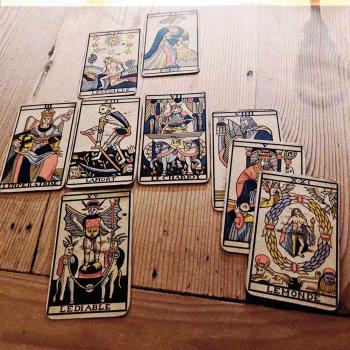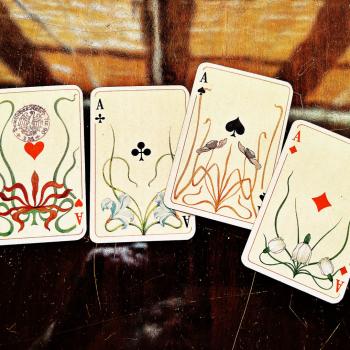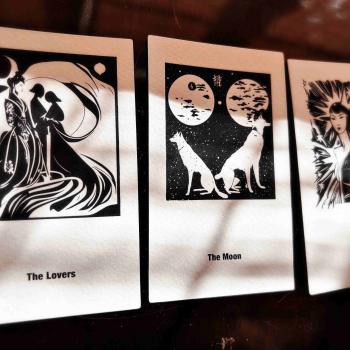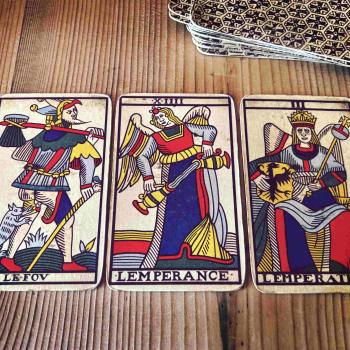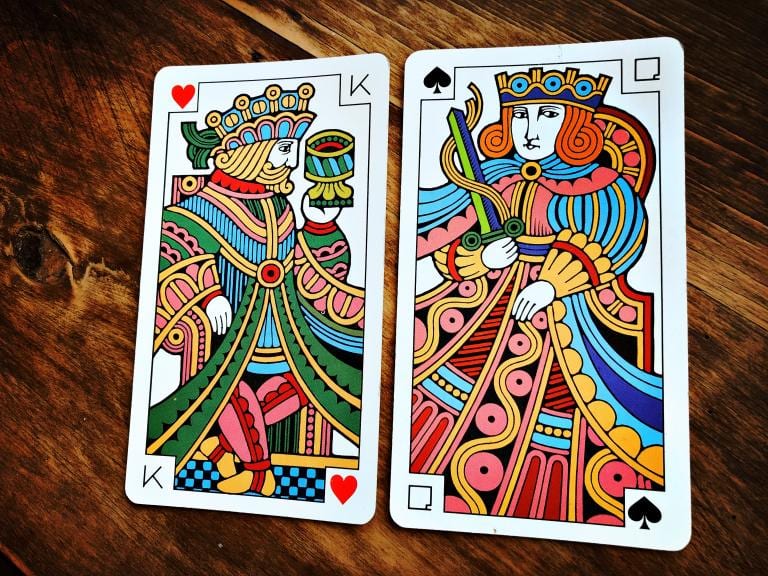
There isn’t much I hammer on in my cartomantic teachings beyond insisting on applying a simple method of observation that relies on computing for two variables: give and take. Reading cards is about give and take. It’s about give and take simply because, as a mirror for our most common concerns, the four suits of the cards – diamonds, hearts, clubs, and spades – are all about how we navigate life according to the principle of give and take.
When a virus hits us, we feel quite powerless in how to face the spreading of it. No one feels safe. This shows us that we’re forever subject to powers that exceed our own personal control. At the same time, by simply deciding to stay indoors and make sure that we don’t subject ourselves to contamination, we exercise a form of power over what’s happening. So there is power in the powerless.
In many of my writings I stress the importance of staying with the surface of things, as this is the only option we have if we are to stay in momentum. Staying in momentum is power. At least that’s what all the genius martial arts samurai generals have been instructing for ages, and I tend to listen to these masters. Why? Think of the alternative. While you may think that digging for abstract notions of your inner power and making that manifest contributes to letting others see just how awesome you are, in reality, such digging for the abstract only contributes to giving a false impression of what you’re actually able to take, which is the exact opposite of staying in momentum.
If you pay careful attention, you will notice that the ones who flaunt power that’s merely the result of ‘going after it’ are not people who are in touch with the surface of things. Rather, they’re all busy with being busy making themselves visible. This goes from politicians to your own young sons and daughters. Image construction and maintenance – very much the domain of politicians and young people – is a major preoccupation with projection. And projection in this sense is all about taking; taking people’s time, grabbing their attention, and dazzling them. All fine, until the enchantment wears off, and you start asking: ‘what gives?’
Power is about give and take, simultaneously. If the balance between giving and taking is not perfect, we talk about corrupt power or abuse. I suggest that today you take your playing cards, to keep it simple, and ask questions about power. Think just this: ‘blacks take, reds give.’ Think of the court cards as people who perform these actions: ‘the black courts take, and the red courts give.’ Now ask:
-
What is power to you?
-
Who sets the agenda for it?
In your self-empowerment project, who do you listen to? Yourself, or the opinion-makers? If you say, ‘myself,’ how do you know that the self-empowering project is not already dictated to your spine by a higher power? In other words, what informs your conviction that you’re above what others say?
In your taking and giving power, do you ever think of the space in between? – let’s call it the negative space of the powerless, or the space where there’s neither power, nor non-power, to be more precise.
As a martial arts practitioner of Zen philosophy and inclination, I like to think of how much power there is in chance. Chance that’s ‘structured,’ so to speak, by vigilant attention. If you like Japanese films watch Toshiro Mifune in Yojimbo. One thing that’s clear in his performance is that his character subjects himself entirely to chance. He doesn’t walk around flaunting aims, projects, causes, or relevant teachings. That’s where his power is, in chance. In his chance encounters with the bad, however, he wins all the duels because he stays on the surface of things beyond aims, projects, causes, or relevant teachings.
I often think of what I’m doing with the cards, and how much, in fact, my reading practice resembles the martial arts practitioner who is able to stay relevant to himself because he pays attention to what’s on his table, not because he finds meaning in everything. If another points his sword at him by chance, or by the rule of some entitlement, the competent samurai doesn’t ask, ‘what the meaning of this?’ Nor is he surprised, for he will have already had a close look at what happens right then and there, on the surface of action.
The mainstream culture engaging with the popular representation of the samurai thinks that the samurai’s competence comes from his ability to read the thoughts of his opponent. This is not so, as reading the thoughts of another would distract the samurai’s own attention from what is actually the case. Who wants to be preoccupied with what is in another person’s head? How would we even access another person’s thoughts? What a waste of precious time. What we want to pay attention to is momentum and our own position in it. That’s where the power is, in seeing what is, not what is not.
I asked my cards about it. How do I stay in momentum, while also being entirely free from being swayed, free from the seduction of having to pay attention to what is not worth my attention? Giving attention to the attention grabbers is not staying in momentum, so that’s the assumption that leads my reading of my 9 cards here below.
Let’s see what I got. For this I used a fun playing cards deck that features the tarot symbols alongside with the classic suits. We thus have diamonds and coins, hearts and cups, spades and swords, and clubs and batons together.
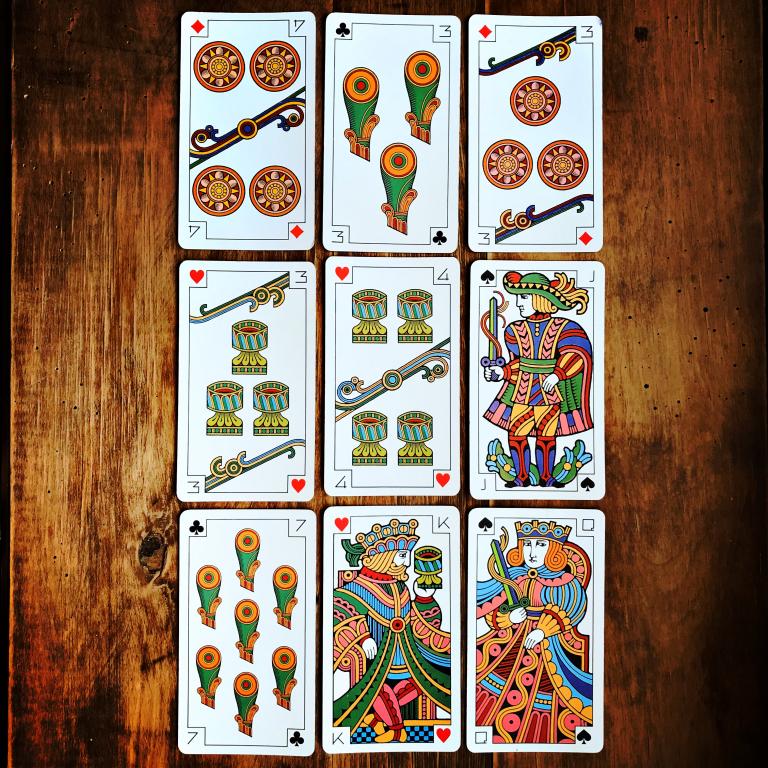
The first card down is the 4 Diamonds card with the 4 Coins as its main representation. We’re with a structure here. The brilliant kind. At the center of this tableau we have 4 Hearts, with the additional 4 Cups representing the same idea of the 4 corners being covered. There’s a division here though, as both of these cards feature a graphic that separates the elements, cutting the card in the middle. This is not so on the three cards representing the number 3 in this tableau. While the 4s are separated, the 3s are gathered.
The first card and center card tell me that I stay in momentum by being aware (4 Diamonds) of what structures this momentum from the perspective of how I feel about it (4 Hearts). So awareness comes before emotion. There’s plenty of distraction around, with the four parts falling into threes. One club always wants to stick its head higher than the others. One cup always wants to be at the top, dominating the 2 cups beneath it, as if holding another substance. If only… On the happier occasion, 6 batons can agree to dance around one of theirs in the middle, the 7th. A benevolent King of Cups will not discriminate in his offering, so he’ll serve the Queen of Spades regardless of her preference. It’s likely, however, that she says no, as this one prefers a sharp sword to a cup. She has her son on her head, the Jack of Spades, who is more interested in looking at what the 4 cups at the center are up to.
The cards are straightforward. I stay in momentum in the exact same way that the 4 suits and their rulers perform their functions. You don’t ask metaphysical questions when you pay attention to what’s under your nose. You just go with it, and act in accordance. Staying in momentum is the same as being beyond meaning, for what would meaning amount to? Where would meaning have its point of reference? In assumption? Derailment from reality? Bedazzlement? No thanks.
I think I’ll take the Queen’s sword and practice some cutting. There’s nothing that has inherent meaning. Power that has meaning is no power at all. When you drink, you drink, and when you cut, you cut. If you happen to be given a sword, or take one from another in fair battle, you then use it to the best of your ability. There’s power in the structure of chance, in swinging with whatever you’ve got in the moment. In the powerless situation, the structure of just chopping wood and carrying water has never been more powerful, for it’s not about what it all means and where it’s all going, but rather, it’s about knowing that now you do the one thing, and next you do the other. And that’s all there is to it.
♠
Cards: Daniele Baroni & Nadia Pazzaglia for Arnoldo Mondadori, ‘Il Futuro con le carte’ 1973.
My book dedicated to the reading of playing cards has a lot to say about the four suits, but, for a change, you may give The Power of the Trumps and Pips a go, as it’s filled with great court card and pip card stories in addition to the tarot trump cards.








